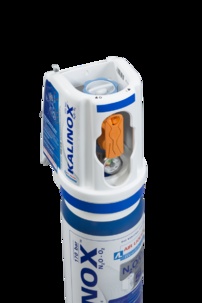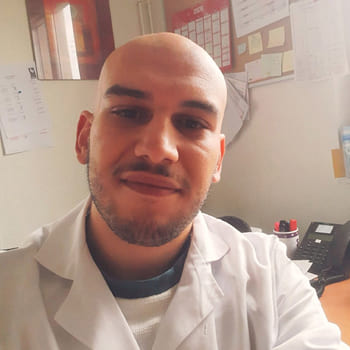

КАЛИНОКС 50%/50% ЛЕКАРСТВЕННЫЕ КОМПРЕССИРОВАННЫЕ ГАЗОВЫЕ ПАСТИЛКИ

Спросите врача о рецепте на КАЛИНОКС 50%/50% ЛЕКАРСТВЕННЫЕ КОМПРЕССИРОВАННЫЕ ГАЗОВЫЕ ПАСТИЛКИ

Инструкция по применению КАЛИНОКС 50%/50% ЛЕКАРСТВЕННЫЕ КОМПРЕССИРОВАННЫЕ ГАЗОВЫЕ ПАСТИЛКИ
Введение
Инструкция: информация для пользователя
KALINOX 50%/50%,сжатый медицинский газ в баллонах
Оксид азота / Кислород
Прочитайте внимательно всю инструкцию перед началом использования этого лекарства, поскольку она содержит важную информацию для вас.
Сохраните эту инструкцию, поскольку вам может потребоваться перечитать ее.
- Если у вас есть какие-либо вопросы, проконсультируйтесь с вашим врачом или фармацевтом.
- Это лекарство было назначено только вам, и не следует давать его другим людям, даже если у них такие же симптомы, как у вас, поскольку оно может нанести им вред.
- Если вы испытываете побочные эффекты, проконсультируйтесь с вашим врачом или фармацевтом, даже если это побочные эффекты, которые не указаны в этой инструкции. См. раздел 4
Содержание инструкции
- Что такое KALINOX и для чего он используется
- Что вам нужно знать перед началом использования KALINOX
- Как использовать KALINOX
- Возможные побочные эффекты
- Хранение KALINOX
- Содержание упаковки и дополнительная информация
1. Что такое KALINOX и для чего он используется
KALINOX - это смесь двух медицинских газов (оксид азота 50% и кислород 50%). Он относится к группе обезболивающих препаратов (лекарств, которые облегчают боль).
При этой концентрации KALINOX не имеет анестезирующего эффекта.
KALINOX показан для использования в коротких болезненных операциях.
2. Что вам нужно знать перед началом использования KALINOX
Не используйте KALINOXв следующих случаях
- Любые изменения в состоянии сознания, которые препятствуют сотрудничеству пациента.
- Пациенты, которым требуется вентиляция чистым кислородом
- Травмы головы
- Пневмоторакс (накопление воздуха или газа в плевральной полости)
- Буллезный эмфизема (разрушение легочной ткани из-за присутствия воздуха)
- Газовая эмболия (закупорка сосуда из-за присутствия пузырьков воздуха или газа)
- Декомпрессионная болезнь
- После недавнего погружения под воду
- После воздушной энцефалографии
- Газовая дистенсия живота
- Челюстно-лицевая травма, затрагивающая область применения маски
- Во время операции на среднем ухе, внутреннем ухе и носовых пазухах
- Если был введен воздух в эпидуральное пространство для определения положения иглы для эпидуральной анестезии
- Пациенты, которым была недавно введена инъекция газа в глаз (такого как SF6, C3F8, CsF6) всегда, когда сохраняется пузырек газа в глазу или в течение 3 месяцев после последней инъекции газа в глаз. Расширение пузырька газа в глазу оксидом азота может вызвать тяжелое нарушение зрения
Использование KALINOX должно быть немедленно прекращено в случае потери контакта с пациентом.
Предостережения и меры предосторожности:
- Газ должен быть введен обученным персоналом. Вы никогда не должны перевозить баллоны KALINOX.
- Помещения, в которых используется KALINOX, должны быть оснащены системой кондиционирования воздуха или адекватной вентиляцией для поддержания уровня оксида азота в воздухе на минимальном уровне.
- Дышите нормально во время вдыхания газа.
- До введения KALINOX не следует наносить на лицо жирные вещества (кремы, мази и т. д.).
- Эффективность лечения ниже у детей младше 3 лет.
- Оксид азота вызывает инактивацию витамина B12 (кофактора метионинсинтазы), что нарушает метаболизм фолата. Следует учитывать оценку уровня витамина B12 у пациентов с факторами риска дефицита витамина B12 до использования анестезии оксидом азота. Факторы риска могут включать пациентов, страдающих анемией или атрофическим гастритом, тех, кто придерживается вегетарианской диеты, или тех, кто использовал лекарства, которые могут влиять на витамин B12 и/или метаболизм фолата. Следует назначать добавки витамина B12 в случае повторного или длительного введения.
- В случае обструкции слуховой трубы из-за увеличения давления в среднем ухе может наблюдаться боль в ухе и/или разрыв барабанной перепонки.
- Злоупотребление, неправильное использование и отклонение: из-за эйфорического эффекта оксида азота он может быть предметом злоупотребления для рекреационного использования.
- Давление внутри черепа должно быть внимательно контролировано у пациентов с диагнозом и/или риском внутричерепной гипертензии, поскольку было отмечено увеличение давления внутри черепа во время введения оксида азота у некоторых пациентов с внутричерепными расстройствами.
Использование KALINOXс другими лекарствами
Сообщите вашему врачу, если вы используете или недавно использовали другие лекарства, включая те, которые были приобретены без рецепта.
- Если вы были лечены газами для глаз (SF6, C2F6, C3F8) в офтальмологической хирургии (хирургии глаз), скажите об этом вашему врачу, чтобы он мог убедиться, что введение не подвергает вас риску осложнений после операции, которые могут вызвать увеличение давления внутри глаза.
- В сочетании с лекарствами, действующими на центральную нервную систему (такими как производные морфина, бензодиазепины и другие психотропные лекарства), увеличивается риск сонливости, десатурации (снижения уровня кислорода в крови), рвоты и снижения артериального давления. В случае сочетания с такими лекарствами необходимо усилить наблюдение за пациентом.
- Лекарства, которые нарушают витамин B12 и/или метаболизм фолата, могут усилить инактивацию витамина B12 оксидом азота.
Беременность и лактация
Проконсультируйтесь с вашим врачом или фармацевтом перед использованием любого лекарства.
- Не рекомендуется использовать KALINOX во время первого триместра беременности. Оксид азота может быть использован во время беременности, если это клинически необходимо. Когда оксид азота используется перед родами, новорожденных следует наблюдать за возможными побочными эффектами.
- Было отмечено увеличение числа спонтанных абортов и врожденных дефектов у женщин, подвергшихся хроническому профессиональному воздействию оксида азота во время беременности, в отсутствие адекватной системы вентиляции.
Вождение и использование машин
После введения KALINOX не рекомендуется водить транспорт или использовать машины до тех пор, пока не исчезнут все побочные эффекты и не будет восстановлено нормальное состояние сознания.
3. Как использовать KALINOX
Следуйте точно инструкциям по введению этого лекарства, указанным вашим врачом. Проконсультируйтесь с вашим врачом, если у вас есть вопросы.
Введение должно осуществляться в специальных помещениях, врачами-специалистами или дипломированными медсестрами, специально обученными для постоянного наблюдения за пациентом.
Продолжительность вдыхания смеси зависит от продолжительности операции и не должна превышать 60 минут подряд. В случае ежедневного введения не должно превышать 15 дней подряд. После прекращения вдыхания возвращение к исходному состоянию происходит почти сразу и без остаточного эффекта.
Поток смеси (количество газа, которое пациент получает в секунду или в минуту) определяется спонтанной вентиляцией пациента.
Использование в болезненных операциях:
До операции маска должна быть сохранена в течение 3 минут. В течение этого времени поддерживается контакт с пациентом. Лицо, наблюдающее за введением, дает согласие на начало операции. Вдыхание газа сохраняется во время всей операции, указывая пациенту дышать нормально.
Во время введения наблюдение является в основном клиническим. Пациент должен быть расслаблен, дышать нормально и реагировать на простые команды; в случае сильной седации с потерей контакта необходимо снять маску до восстановления контакта.
Использование в стоматологии:
У пациентов, которые не могут правильно сохранить маску на лице, она будет удерживаться другим человеком без применения большого давления. После 3 минут операция может быть проведена без перерыва, если используется назальная маска, или в течение периодов по 20-30 секунд, если используется буко-назальная маска (которая закрывает нос и рот), которая в этих случаях будет поднята над носом в течение указанных периодов.
В конце операции маска будет снята, и пациент будет оставаться в покое в стоматологическом кресле в течение 5 минут.
Использование в акушерстве (беременность, роды и послеродовой период):
Вдыхание газа должно быть начато с начала схваток, до появления боли. Роженица должна дышать нормально во время схватки и стараться не гипервентилировать (дышать быстро или глубоко, что вызывает ощущение нехватки воздуха) из-за риска десатурации кислорода между схватками. Вдыхание газа будет прекращено, когда боль уменьшится. В этом случае рекомендуется постоянно контролировать уровень кислорода.
Если вы использовали больше KALINOX, чем должно быть
Если вы использовали больше KALINOX, чем должно быть, немедленно проконсультируйтесь с вашим врачом или позвоните в Службу токсикологической информации, телефон 91- 562 0420, указав лекарство и количество.
В случае неправильного хранения при температуре ниже 0°C может произойти цианоз (нехватка кислорода). В этом случае оба газа (оксид азота и кислород) могут выходить отдельно из баллона.
Если цианоз появляется во время введения, необходимо немедленно прекратить лечение; если, несмотря на это, цианоз не исчезает очень быстро, необходимо провентилировать пациента с помощью ручного баллона, наполненного воздухом.
Передозировка может вызвать увеличение головокружения, потерю сознания, цианоз и смерть от аноксии.
В этих обстоятельствах лечение должно быть немедленно прекращено, и должны быть приняты соответствующие меры.
4. Возможные побочные эффекты
Как и все лекарства, KALINOX может вызывать побочные эффекты, хотя не все люди испытывают их.
Оксид азота проникает во все пространства, содержащие газ, быстрее, чем азот. Использование оксида азота может привести к расширению полостей, содержащих газ, без вентиляции.
Частые (> 1/100 до < 1/10):
Нарушения желудочно-кишечного тракта: тошнота, рвота
Редкие (> 1/1000 до < 1/100):
Нарушения нервной системы: парестезия, чрезмерная седация.
Психические расстройства: эйфория, агитация, тревога, галлюцинации, сны
Неизвестные (не могут быть оценены на основе доступных данных):
Расстройства нервной системы: головокружение, миелопатия, нейропатия, увеличение внутричерепного давления, генерализованные судороги.
Расстройства крови и лимфатической системы: мегалобластная анемия, панцитопения (наблюдаемая в предрасположенных обстоятельствах (дефицит кобаламина, злоупотребление веществами)), лейкопения/агранулоцитоз (наблюдаемые после очень высоких и длительных воздействий лечения против тетануса в 1950-х годах)
Расстройства зрения: тяжелое нарушение зрения (вызванное расширением газа в глазу).
Расстройства уха и лабиринта: боль в ухе, расстройства среднего уха, разрыв барабанной перепонки (при обструкции слуховой трубы).
Расстройства дыхания, грудной клетки и средостения: респираторная депрессия (у новорожденного, когда используется оксид азота во время родов).
Расстройства метаболизма и питания: дефицит витамина B12.
Психические расстройства: дезориентация
Сообщение о побочных эффектах
Если вы испытываете любой побочный эффект, проконсультируйтесь с вашим врачом или фармацевтом, даже если это возможные побочные эффекты, которые не указаны в этой инструкции. Вы также можете сообщить об этом напрямую через Испанскую систему фармаковигиланса лекарств для человека: www.notificaRAM.es. Сообщая о побочных эффектах, вы можете внести свой вклад в предоставление более полной информации о безопасности этого лекарства.
5. Хранение KALINOX
Храните в недоступном для детей месте.
Заполненные баллоны должны храниться В ГОРИЗОНТАЛЬНОМ ПОЛОЖЕНИИ, при температуре от 10 до 30°C, не менее 48 часов до использования, с закрытыми клапанами.
Защитите баллоны от ударов, падений, источников тепла или воспламенения, горючих материалов, непогоды и, в частности, низких температур.
Не используйте KALINOX после даты истечения срока годности, указанной на упаковке после "CAD". Дата истечения срока годности - последний день месяца, который указан.
Следуйте всем правилам, касающимся обращения с под давлением сосудами.
6. Содержание упаковки и дополнительная информация
Состав КАЛИНОКС
- Активные вещества: оксид азота и кислород. В каждом баллоне содержится смесь обоих компонентов в соотношении 50% (моль/моль).
- Не содержит других компонентов (вспомогательных веществ).
Внешний вид продукта и содержание упаковки
КАЛИНОКС поставляется в баллонах, доступных в следующих размерах:
Тип упаковки | Вместимость воды (л) | Количество выделяемого газообразного продукта при 1 атм и 15°C (м3) | Масса хранящегося продукта (кг) | Тип клапана (см. легенду в конце) |
В2 | 2 | 0,60 | 0,943 | 2, 3 |
В5 | 5 | 1,47 | 2,358 | 1, 2, 3 |
В11 | 11 | 3,23 | 5,187 | 2, 3 |
В15 | 15 | 4,4 | 7,073 | 2, 3 |
Легенда типа клапана:
1Упаковка доступна с клапаном без встроенного регулятора давления (клапаны стандартного типа RPV).
2Упаковка доступна с клапаном с встроенным регулятором давления (клапаны Compact G2 (Компакт)).
3Упаковка доступна с клапаном с встроенным регулятором давления (клапаны M706 (One K)).
Возможно, что будут продаваться только некоторые размеры упаковки.
Владелец разрешения на маркетинг и ответственный за производство
Владелец разрешения на маркетинг:
AIR LIQUIDE Santé INTERNATIONAL
75, Квай Д'Орсе
75007 - Париж (Франция)
Ответственный за производство:
AIR LIQUIDE MEDICAL
Толхусстраат 46-48
2627 - Шелле (Бельгия)
AIR LIQUIDE Santé FRANCE
Ле пети карро
2, авеню дю Лис
94380 Бонёй-сюр-Марн
Франция
Дата последнего пересмотра этого листка:Июнь 2024
Инструкции по использованию и обращению
КАЛИНОКС предназначен только для использования в больницах.
Концентрация кислорода (FiO2) никогда не должна быть ниже 21%.
Чтобы избежать аварий, необходимо соблюдать следующие инструкции:
- Персонал, обрабатывающий баллоны, должен быть обучен использованию газов.
- Не использовать никакие баллоны, которые, возможно, были подвергнуты воздействию температуры ниже 0°C.
- Если на баллоне образовалась иней, не использовать его и вернуть.
- Не обращаться с баллоном, клапан которого не защищен колпачком.
- Никогда не использовать баллон, имеющий утечки.
- Не поднимать баллон за клапан.
- Не пытаться ремонтировать неисправный клапан.
- Удерживать баллоны с помощью подходящего средства (цепей, крюков и т. д.), чтобы поддерживать их в ВЕРТИКАЛЬНОМположении и избежать падений.
- Никогда не заставлять баллон входить в опору, если он туда не входит легко.
- Обеспечить хорошую вентиляцию места использования. В случае длительного использования, аварии или внезапной утечки убедиться в возможности удаления газов. Предельное среднее значение воздействия оксида азота установлено на уровне 50 ppm по отношению к воздействию на персонал.
- Никогда не находиться перед выходом клапана, а находиться с противоположной стороны манометра-расходомера, за баллоном и на некотором расстоянии. Не подвергать пациента воздействию потока газа ни в коем случае.
- Обращаться с материалом чистыми руками и без жира.
- Не использовать генераторы аэрозолей (лак, дезодорант и т. д.), растворители (спирт, бензин и т. д.) на материале или вблизи него.
- Не наносить жирные вещества (вазелин, мази и т. д.) на лицо пациентов.
- Не смазывать.
- Не курить.
- Не подносить к пламени.
И в частности:
- Никогда не вводить этот газ в аппарат, который, возможно, содержит горючие вещества, особенно жир.
- Никогда не чистить аппараты, содержащие этот газ, клапаны, уплотнения, устройства для закрытия, а также контуры, с помощью горючих продуктов, особенно жирных материалов.
В случае утечки закрыть клапан, который имеет неисправность. Интенсивно проветрить помещение и эвакуировать его.
В случае пожара риск токсичности увеличивается из-за образования паров оксида азота.
В случае баллонов, оснащенных клапаном:
- Открыть клапан баллона немного перед подключением регулятора давления, чтобы удалить любые частицы или посторонние вещества. Поддерживать точку контакта между баллоном и регулятором давления чистой в любое время.
- Баллоны оснащены манометром-расходомером: они имеют специальное соединение для смеси оксида азота и кислорода для медицинского использования, соответствующее нормативу NF S 90-116.
- Использовать регулятор давления с расходомером, способным измерять давление не менее 1,5 раза максимального рабочего давления баллона.
Чтобы открыть баллон после подключения:
- Следовать инструкциям на этикетке баллона.
- Никогда не заставлять клапан при открытии и не открывать его полностью.
- Всегда открывать клапан медленно, чтобы избежать охлаждения, которое может вызвать неоднородность смеси.
- Никогда не создавать давление в регуляторе давления повторно.
- Не переливать газ из баллона с низким давлением в другой баллон.
После использования:
- Закрыть клапан баллона после использования и позволить регулятору давления показать значение, оставив расходомер открытым; затем закрыть расходомер и ослабить регулировочный винт регулятора давления.
- Никогда не опустошать баллон полностью и всегда оставлять его при минимальном давлении 10 бар.
Держать пустые баллоны в ВЕРТИКАЛЬНОМположении, с закрытыми клапанами (чтобы избежать коррозии из-за влаги).
- Страна регистрации
- Активное вещество
- Требуется рецептДа
- Производитель
- Информация носит справочный характер и не является медицинской рекомендацией. Перед приемом любых препаратов проконсультируйтесь с врачом. Oladoctor не несет ответственности за медицинские решения, принятые на основе этого контента.
- Аналоги КАЛИНОКС 50%/50% ЛЕКАРСТВЕННЫЕ КОМПРЕССИРОВАННЫЕ ГАЗОВЫЕ ПАСТИЛКИФорма выпуска: ЛЁГОЧНАЯ ИНГАЛЯЦИЯ, 50% / 50% в/вАктивное вещество: nitrous oxide, combinationsПроизводитель: Sociedad Española De Carburos Metalicos S.A.Требуется рецептФорма выпуска: ЛЁГОЧНАЯ ИНГАЛЯЦИЯ, 50%/50% (V/V)Активное вещество: nitrous oxide, combinationsПроизводитель: Sol France Sucursal En EspanaТребуется рецептФорма выпуска: ЛЁГОЧНАЯ ИНГАЛЯЦИЯ, 50%/ 50%Активное вещество: nitrous oxide, combinationsПроизводитель: Linde Sverige AbТребуется рецепт
Аналоги КАЛИНОКС 50%/50% ЛЕКАРСТВЕННЫЕ КОМПРЕССИРОВАННЫЕ ГАЗОВЫЕ ПАСТИЛКИ в других странах
Лучшие аналоги с тем же действующим веществом и терапевтическим эффектом.
Аналог КАЛИНОКС 50%/50% ЛЕКАРСТВЕННЫЕ КОМПРЕССИРОВАННЫЕ ГАЗОВЫЕ ПАСТИЛКИ в Польша
Врачи онлайн по КАЛИНОКС 50%/50% ЛЕКАРСТВЕННЫЕ КОМПРЕССИРОВАННЫЕ ГАЗОВЫЕ ПАСТИЛКИ
Консультация по дозировке, побочным эффектам, взаимодействиям, противопоказаниям и продлению рецепта на КАЛИНОКС 50%/50% ЛЕКАРСТВЕННЫЕ КОМПРЕССИРОВАННЫЕ ГАЗОВЫЕ ПАСТИЛКИ – по решению врача и с учетом местных правил.














